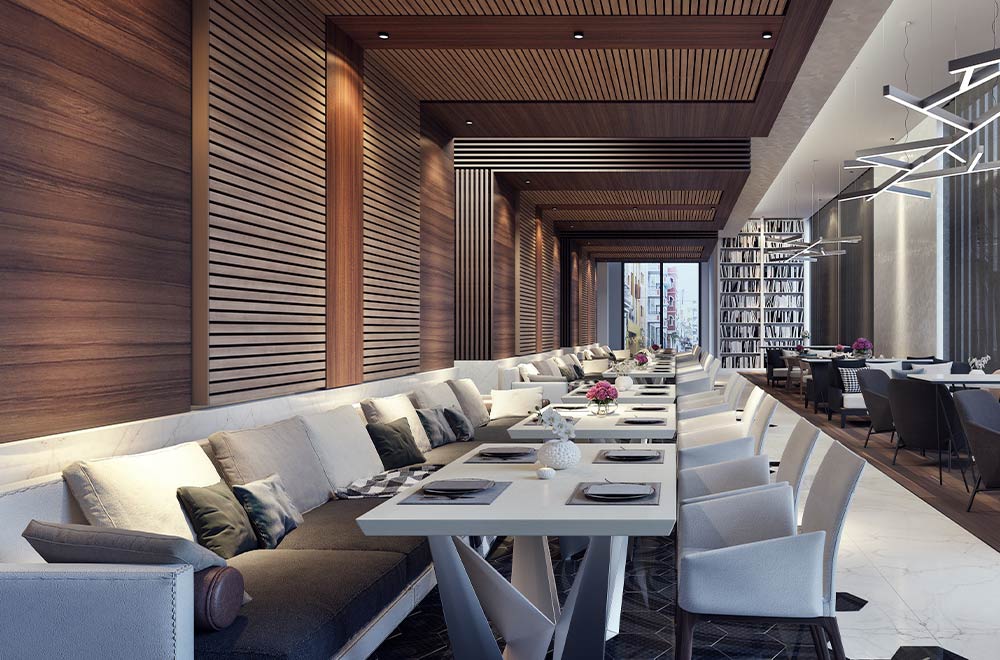Savor Genuine Eastern Food With a Pan-Asian Spin for a Culinary Adventure
Getting started on a culinary trip through authentic Eastern food, boosted with a Pan-Asian twist, offers an unique possibility to check out the abundant tapestry of flavors that specify the area's diverse culinary customs. This experience invites you to savor the exquisite balance of preferences-- sweet, salty, spicy, and sour-- harmonized by aromatic natural herbs and flavors. Visualize the innovative blend of Thai curry and ramen or the unexpected pleasure of sushi burritos. As you contemplate these enticing recipes, think about the cultural stories and historical impacts that form them, each bite using a story waiting to be found.

Exploring Pan-Asian Tastes
In the world of international gastronomy, Pan-Asian food stands out for its amazing variety and the unified interaction of flavors from various Asian societies. This culinary technique commemorates the abundant practices and distinct ingredients located throughout the continent, producing a tapestry of tastes that is both enjoyable and appealing. Secret to Pan-Asian cuisine is its capacity to balance contrasting flavors-- sweet, salted, spicy, and sour-- while highlighting the quality and quality of each ingredient.
From the umami-rich soy sauce of Japan to the intense chili peppers of Thailand, Pan-Asian food provides a considerable palette of tastes. These aspects are frequently combined in innovative methods, enhancing recipes with layers of intricacy. As an example, using aromatic natural herbs such as lemongrass and cilantro, typical in Vietnamese and Thai food, includes a revitalizing illumination to meals, while the incorporation of coconut milk supplies a creamy, abundant structure.
The focus on fresh produce and fragrant flavors makes certain that each meal is not just a banquet for the taste however likewise for the senses. Pan-Asian food welcomes diners to get started on a cooking trip, discovering the vast and varied landscapes of Asian gastronomy with every bite.
Blend Meals to Try
While Pan-Asian cuisine is celebrated for its typical flavors, the modern culinary landscape is progressively welcoming fusion meals that blend these timeless elements with impacts from various other regions. This ingenious approach not only honors the rich heritage of Oriental cookeries yet also introduces unique preference experiences that appeal to contemporary tastes buds.
An archetype of such a blend meal is the Korean-Mexican taco, where marinaded bulgogi beef is wrapped in a warm tortilla, topped with kimchi and a zesty gochujang-infused salsa. This combination marries the strong, mouthwatering flavors of Korea with the lively, fresh aspects of Mexican food. Similarly, sushi burritos have actually gained popularity, integrating the fragile creativity of Japanese sushi with the hearty, hand-held benefit of a burrito, typically featuring fusion components like tempura shrimp and avocado with a drizzle of wasabi mayo.
An additional significant dish is Thai curry ramen, which instills the luscious, aromatic spices of Thai curry into the soothing broth of standard Japanese ramen, developing an unified blend that entices the detects. These combination meals prolong beyond simple novelty; they stand for a cooking discussion between cultures, urging expedition and innovation worldwide of Pan-Asian cuisine.
Necessary Components and Spices
To truly appreciate Pan-Asian food, one have to comprehend the important components and spices that develop its foundation. This varied cooking design draws from a rich tapestry of Asian practices, using an unified mix of tastes and structures. Secret components consist of soy sauce, fish sauce, and oyster sauce, which pass on a tasty umami depth vital to Oriental dishes. Complementary to these are rice vinegar and mirin, providing a delicate level of acidity and sweetness.
Fragrant elements click over here are crucial, with lemongrass, garlic, and ginger being ubiquitous across various Pan-Asian dishes. These active ingredients provide an aromatic base that improves the intricacy of flavors. Seasonings such as star anise, cardamom, and cinnamon present heat and personality, echoing impacts from regions like China and India.

Cooking Methods and Tips
Grasping the art of Pan-Asian food calls for familiarity with its distinct food preparation methods, each contributing to the vibrant tapestry of flavors this cooking practice is celebrated for. Central to these approaches is the stir-fry, a rapid food preparation technique that maintains the dietary honesty and brilliant shades of active ingredients. Utilizing a frying pan, the stir-fry method enables also warm distribution, vital for accomplishing the particular texture and taste equilibrium of Pan-Asian recipes.
Another fundamental technique is steaming, especially prevalent in Chinese food. This mild method preserves the all-natural tastes and nutrients of ingredients, making it optimal for fish and shellfish and vegetables. Dumplings, a precious staple, usually gain from steaming, causing soft, delicious appearances.
Cooking, additionally important, passes on smoky depths to recipes such as Oriental bulgogi or Japanese yakitori (asian restaurant isb). This strategy typically involves seasoning active ingredients, enabling flavors to permeate deeply before food preparation over an open flame or warm plate
Lastly, mastering the art of stabilizing tastes-- wonderful, sour, salty, bitter, and umami-- is important. Correctly layering these components can elevate a dish from regular to remarkable, providing a complicated and pleasing cooking experience that personifies the significance of Pan-Asian food.
Dining Experiences Worldwide
Across the world, Pan-Asian food provides an unmatched dining experience, celebrated for its abundant tapestry of flavors and dynamic discussions. This cooking sensation has actually transcended social boundaries, catching the hearts and tastes of food enthusiasts worldwide. In cosmopolitan cities like New York, London, and Sydney, Pan-Asian restaurants function as fusions where culinary customs from Thailand, Japan, China, and past merge, providing restaurants with a diverse mix of meals that highlight the region's variety.
The international charm of Pan-Asian food depends on its capacity to provide both credibility and innovation. Cooks skillfully marry conventional ingredients such as lemongrass, soy sauce, and miso with modern techniques, causing recipes that are both familiar and view it refreshingly new. This fusion enables restaurants to start a cooking trip that values heritage while welcoming modernity.
Moreover, eating experiences are my link boosted through thoughtfully designed environments that reflect the ethos of Pan-Asian aesthetics. From minimal Japanese-inspired insides to vivid Thai-themed spaces, each dining establishment provides a special atmosphere that enhances the culinary offerings. As a result, clients are not merely consuming a meal however partaking in a cultural experience, making Pan-Asian dining a genuinely global phenomenon.
Conclusion
The exploration of Pan-Asian cuisine uses a profound understanding of the intricate interplay of flavors and culinary customs across Asia. By embracing combination dishes such as Thai curry ramen and sushi burritos, the cooking trip not just highlights the versatility of conventional components however also showcases ingenious modern techniques. This gastronomic adventure, enriched by crucial spices and cooking approaches, supplies an one-of-a-kind possibility to value the cultural diversity and cooking virtuosity that specify Pan-Asian food on an international scale.
Getting started on a culinary trip through genuine Asian food, enhanced with a Pan-Asian spin, provides an one-of-a-kind opportunity to discover the abundant tapestry of flavors that specify the region's diverse cooking traditions.In the realm of international gastronomy, Pan-Asian food stands out for its remarkable diversity and the unified interplay of flavors from numerous Eastern cultures. Key to Pan-Asian food is its capability to stabilize different flavors-- wonderful, salty, spicy, and sour-- while highlighting the freshness and high quality of each active ingredient.
